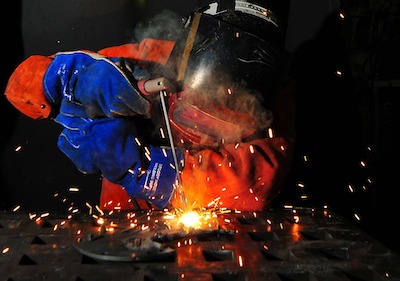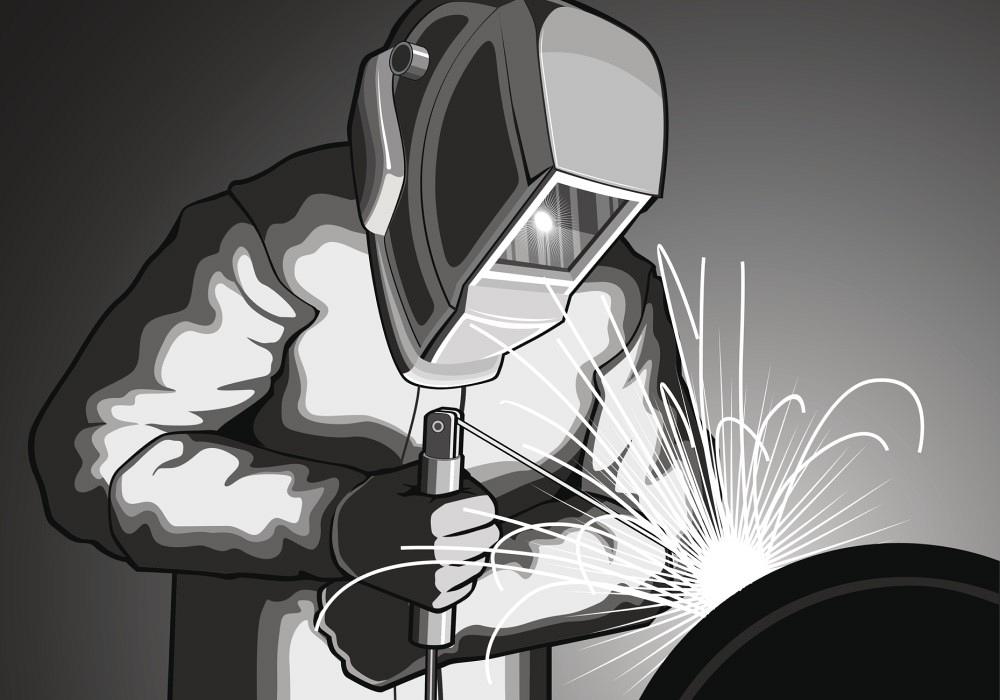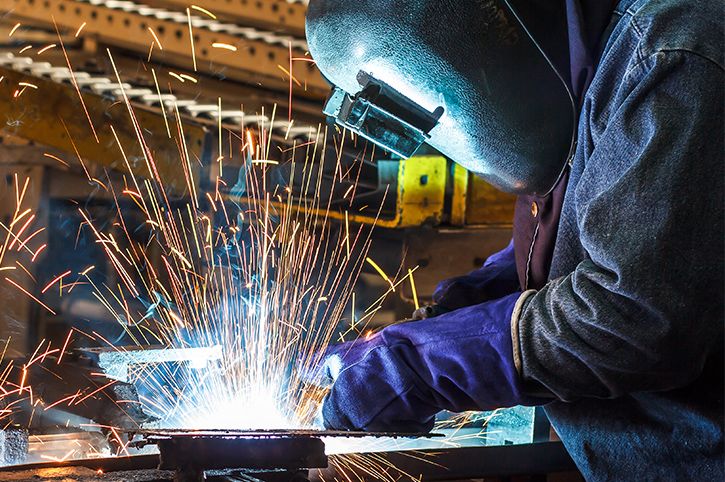Typical Welding Repair Issues and Exactly How to Address Them Successfully
Welding fixings often encounter a variety of issues that can jeopardize the integrity of the end product. Typical troubles include poor infiltration, porosity, and misalignment, to name a few. Each flaw presents distinct difficulties that call for specific techniques for resolution. Understanding these problems is necessary for welders aiming to improve their abilities and end results. This discussion will check out these common welding repair service problems and effective techniques to resolve them.
Poor Infiltration
Insufficient infiltration takes place when the weld steel falls short to totally fuse with the base material, resulting in weak joints and potential structural failings. This issue typically stems from inadequate heat input, incorrect electrode angle, or incorrect welding speed. Welders may experience insufficient penetration due to a miscalculation of the needed criteria for a details product density or kind. Additionally, contamination on the base material's surface can prevent efficient bonding, exacerbating the trouble. To attend to poor penetration, welders ought to assure ideal settings on their tools and maintain a tidy job surface area. Regular evaluation of welds is advised to recognize any type of deficiencies early, permitting prompt improvements and the prevention of endangered architectural honesty in bonded assemblies.
Porosity
Porosity is an usual defect in welded joints that shows up as small gas bubbles trapped within the weld steel. This problem can compromise the stability of the weld, bring about reduced strength and possible failing under stress and anxiety. Belgrade Welding. Porosity usually arises from contamination, dampness, or inappropriate welding methods, which enable gases to run away right into the molten weld swimming pool. To attend to porosity, welders ought to ensure proper surface prep work, preserve a clean working setting, and use ideal welding criteria. Additionally, choosing the ideal filler product and protecting gas can alleviate gas entrapment. Routine evaluation and testing of welds can assist identify porosity early, guaranteeing prompt corrective actions are taken, thereby preserving the quality and integrity of the welded framework
Imbalance
Imbalance in welding can occur from numerous elements, including improper configuration and thermal development. Understanding the source is necessary for efficient resolution. Several adjustment techniques are readily available to realign components and guarantee architectural integrity.
Sources of Imbalance
Welding imbalance often stems from a variety of underlying issues that can endanger architectural integrity. One main cause is inappropriate fit-up of components before welding, which can result in spaces and unequal surface areas. Variants in thermal development throughout the welding process can additionally lead to distortion, particularly if the products being joined have different coefficients of development. In addition, insufficient securing and fixturing might fall short to hold elements safely in place, bring about movement throughout welding. Badly maintained tools, consisting of welding machines and tools, may present disparities in the weld bead, additional adding to imbalance. Driver error, stemming from insufficient training or experience, can also play a significant duty in creating misaligned welds.

Modification Methods Readily Available
Resolving imbalance effectively requires a combination of corrective methods customized to the specific concerns available. One common approach is using fixtures or jigs to hold elements in the right setting throughout welding, ensuring consistent positioning. Additionally, preheating the materials can help reduce distortion and improve fit-up. For significant misalignment, mechanical adjustment methods, such as utilizing hydraulic jacks or clamps, can be used to fix the placement prior to welding. Post-weld warmth therapy may additionally be required to soothe stress and anxieties triggered by imbalance. Finally, cautious inspection and adjustment during the setup stage can prevent imbalance problems from becoming significant troubles, advertising a smoother welding procedure and enhancing general structural honesty.
Distortion
Distortion is an usual obstacle in welding that can emerge from different aspects, consisting of unequal cooling and heating. Comprehending the reasons for distortion is crucial for applying efficient prevention methods. Addressing this issue not only improves structural stability yet also improves the general quality of the weld.
Reasons of Distortion
When subjected to the extreme warm of welding, materials frequently go through adjustments that can bring about distortion. This phenomenon mainly emerges from thermal development and contraction during the welding procedure. As the weld location warms up, the product expands; upon cooling, it acquires, which can develop internal stresses. Additionally, uneven home heating throughout a work surface can worsen these tensions, leading to warping or flexing. The type of product additionally plays a considerable function; steels with differing thermal conductivity and coefficients of growth might respond in different ways, leading to unpredictable distortions. Additionally, poor joint design and poor fixturing can add to imbalance during welding, raising the chance of distortion. Going Here Recognizing these causes is essential for efficient welding repair work and prevention methods.
Prevention Techniques
Efficient prevention strategies for distortion throughout welding concentrate on managing warmth input and making certain appropriate joint style. Preserving a regular warmth input helps to decrease thermal expansion and tightening, which can bring about distortion. Making use of strategies such as pre-heating the work surface can likewise reduce the temperature gradient, advertising consistent heating. Additionally, choosing proper joint designs, such as T-joints or lap joints, can improve security and decrease anxiety focus. Implementing correct fixturing to protect the work surfaces in position further aids in keeping positioning throughout the welding process. Staggered welding series can disperse warm more equally, stopping local distortion. By using these techniques, welders can substantially reduce the chance of distortion and improve the total quality of their welds.
Fracturing
Breaking is a typical issue encountered in welding fixings, usually arising from numerous variables such as improper air conditioning prices, material option, or inadequate joint preparation. The occurrence of cracks can significantly compromise the stability of the weld, resulting in potential failures during procedure. To resolve this problem, welders have to first assess the source, making sure that products work and appropriately chosen for the particular application. Additionally, regulating the cooling rate throughout the welding process is necessary; companies looking for welders quick air conditioning can induce stress and anxiety and result in fracturing. Correct joint style and prep work likewise add to reducing the threat. Applying these strategies can improve weld high quality and longevity, ultimately reducing the possibility of cracking in completed weldments.

Incomplete Blend
A substantial concern in welding repair services is insufficient blend, which happens when the weld metal does not properly bond with the base product or previous weld passes - Montana Mobile Welding and Repair Belgrade. This flaw can bring about weaknesses in the joint, possibly compromising the integrity of the bonded structure. Variables adding to incomplete fusion consist of inadequate warmth input, inappropriate welding method, and contamination of the surfaces being joined. To address this concern efficiently, welders should assure proper pre-weld cleansing and surface area prep work, as well as readjust their welding parameters to achieve ample penetration and fusion. Routine evaluation throughout the welding procedure can likewise aid recognize insufficient fusion early, enabling timely restorative steps to boost the general top quality of the weld
Overheating
While welding repair work can boost structural stability, overheating offers a significant difficulty that can cause material deterioration. Too much heat throughout welding can alter the mechanical residential properties of metals, causing decreased toughness, enhanced brittleness, and warping. This phenomenon is particularly vital in high-stress applications where architectural dependability is extremely important. Determining getting too hot can entail visual inspections for staining or distortion, along with keeping an eye on temperature throughout the welding process. To alleviate the threats linked with getting too hot, welders must employ suitable methods, such as managing warmth input, readjusting traveling rate, and using ideal filler products. Furthermore, implementing pre- and post-weld heat treatments can help recover product residential properties and boost the general top quality of the repair, making certain long-lasting efficiency and safety and security.
Regularly Asked Questions
What Are the Typical Indications of a Welding Flaw?

Exactly How Can I Evaluate My Welds for Quality?
To test welds for quality, one can utilize aesthetic inspections, ultrasonic testing, and radiographic techniques. Each technique guarantees structural integrity, determines flaws, and validates adherence to specified requirements, inevitably boosting the dependability of the welded joints.
What Security Safety Measures Should I Take While Welding?
When welding, one ought to prioritize security by using suitable individual safety tools, ensuring proper ventilation, securing combustible products away, maintaining a tidy workspace, and recognizing environments to stop accidents and injuries.
Can I Fix a Weld Without Redoing the Entire Joint?
Fixing a weld without renovating the whole joint is feasible, relying on the damage (Montana Mobile Welding and Repair Belgrade). Strategies such as grinding, including filler product, or using a welding procedure can successfully resolve certain problems while protecting the surrounding framework
What Tools Are Crucial for Efficient Welding Repairs?
Crucial devices for efficient welding repairs include official website a welding equipment, cable brush, mill, protective equipment, clamps, and filler materials. Each device plays a crucial duty in making certain high quality and safety during the fixing process. Porosity normally develops from contamination, dampness, or incorrect welding strategies, which permit gases to escape right into the liquified weld swimming pool. Badly conserved devices, including welding machines and tools, may present inconsistencies in the weld bead, additional adding to misalignment. When subjected to the intense heat of welding, products frequently go through changes that can lead to distortion. Splitting is an usual concern encountered in welding repair services, commonly resulting from numerous factors such as improper cooling rates, material selection, or insufficient joint prep work. A considerable problem in welding fixings is insufficient combination, which takes place when the weld steel does not sufficiently bond with the base product or previous weld passes.